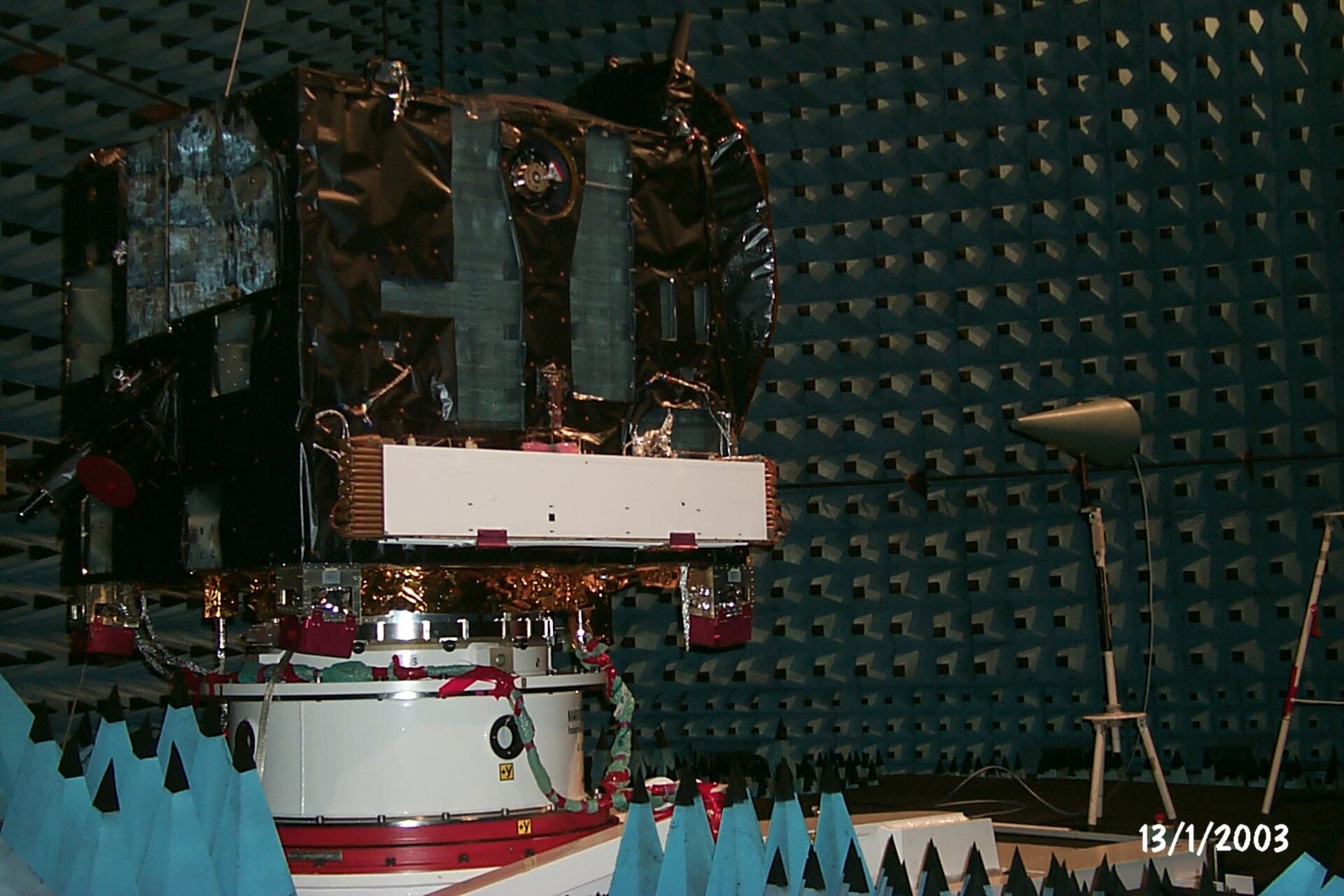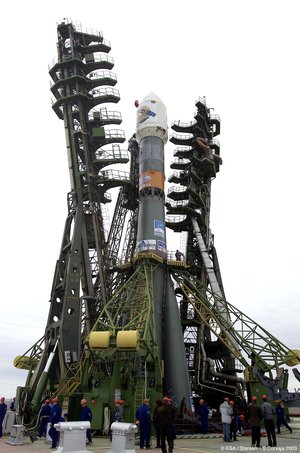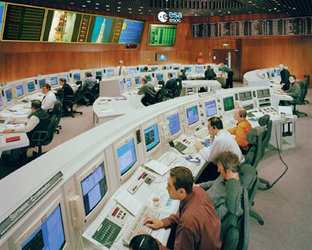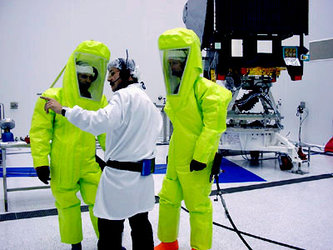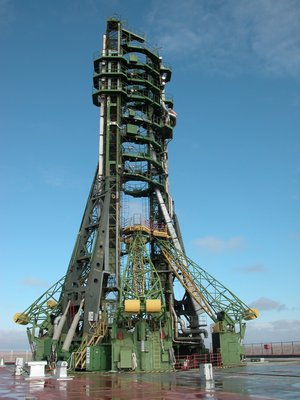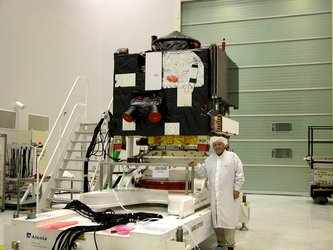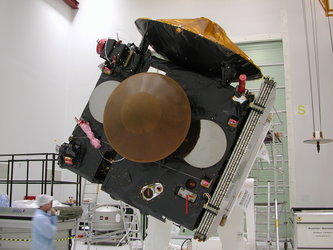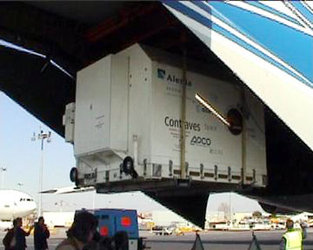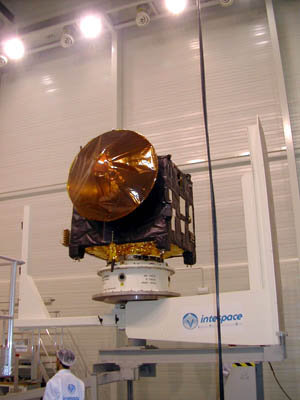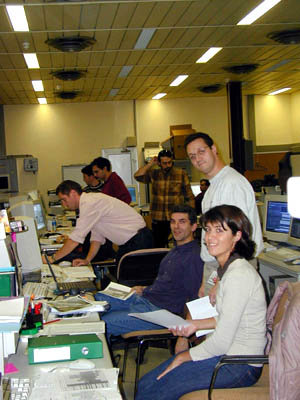No one will ever hear you outside this chamber
Mars Express launch diary 4
This week John Reddy, Principal Electrical Systems Engineer, reports on testing activities.
"We have now successfully completed the System Radiated Electromagnetic Compatibility (EMC) Test programme. Using radio frequency (RF) transmitters and receivers, we test the satellite systems and instruments to ensure that there is no electrical interference between them. The goal is to avoid anomalous behaviour on the spacecraft.
"We have a special chamber that shields the spacecraft receivers from outside transmitters (such as local TV broadcast stations). At the same time, the chamber allows the transmitters, for example, the communications system, to send their signals normally. Engineers call this kind of chamber an 'anechoic' (meaning no reflections) chamber.
"The walls of the chamber contain a carbon-filled foam that absorbs radio frequency waves by multiple reflections through the material. The shape of the material aids the reflections while the carbon/foam combination takes care of the absorption. The Fire Department of Toulouse helped us during a part of the test to ensure that the absorbers did not catch fire due to the absorption of the spacecraft RF emissions.
"Mars Express has an instrument on board called MARSIS which is a radar-operating system. It operates within a very sensitive region of the radio spectrum and we had to be very sure MARSIS would not be affected by the satellite electronics. We also had to ensure that the radar pulses coming from its 40- metre dipole antenna do not affect the satellite.
"We're proud that the whole test programme was a great success. It confirms that we have a payload complement that is compatible within itself as well as with the spacecraft as a whole.
"Now that we have these tests out of the way, we can put the finishing touches to the external thermal control surfaces and to the Integrated System Tests or ISTs, as we call them.
"Why do we do these tests? Simple! We put the satellite through normal and critical mission phases to ensure that the satellite electronics operate as they should. You always need to check that the avionics behaviour is normal, given all the complex interactions.
"As the date for shipping the spacecraft to Baikonur draws closer, the stress and tension levels have increased dramatically, of course. The shipment date is now fixed for early March 2003. We need to complete all development, integration, and testing activities before the spacecraft leaves Europe. Delays of minutes rather than hours or even days now take on a new and sometimes frightening significance.
"Time waits for no man, or spacecraft. There is an urgency for the spacecraft to catch the transport plane. Equally well there is a rush to ensure that the operations centre at ESOC is properly prepared to operate the spacecraft from the moment it becomes separated from the launcher.
"We have checked all the control and operations hardware. What we now have to do is train the Flight Control Team via a long and intensive simulations campaign. Such a campaign simulates normal operations but also trains the teams how to react when there are operational emergencies. More about this in a later edition."


